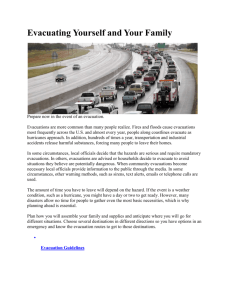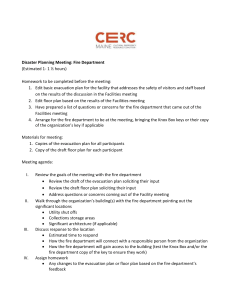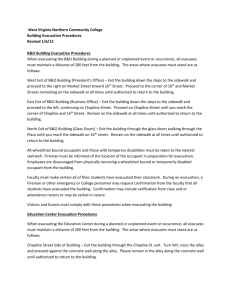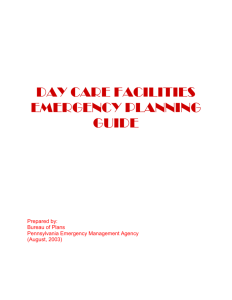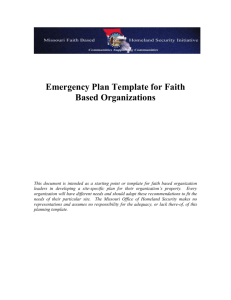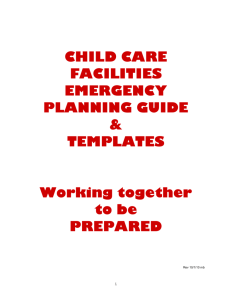Lesson 02B Emergency Response Plans LP
advertisement
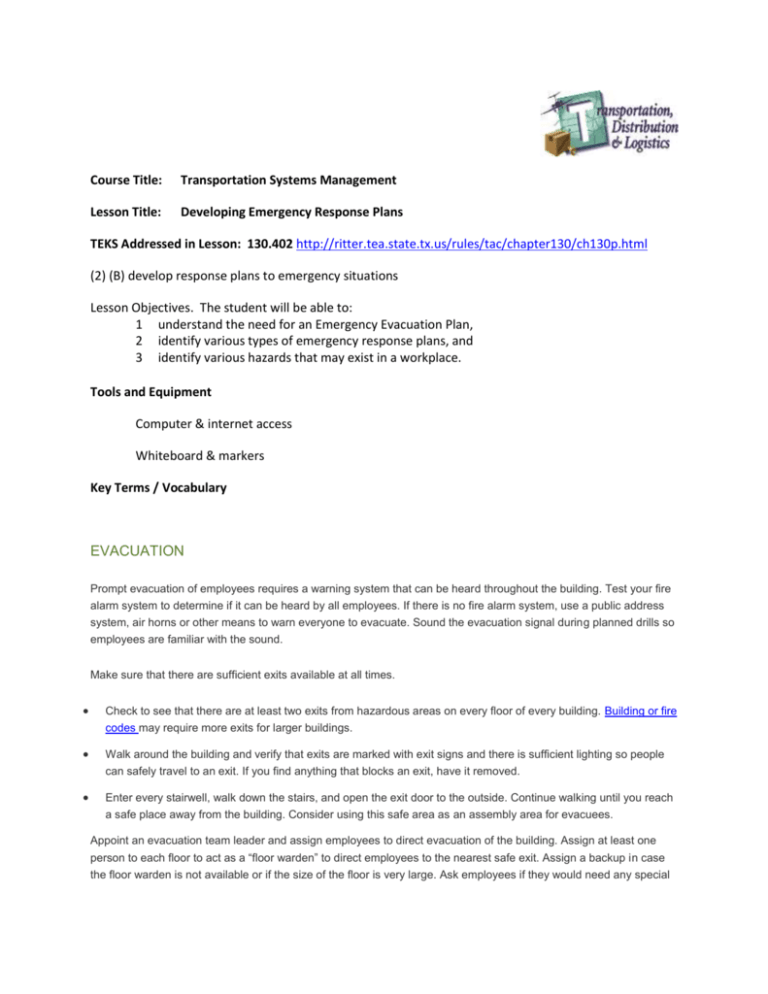
Course Title: Transportation Systems Management Lesson Title: Developing Emergency Response Plans TEKS Addressed in Lesson: 130.402 http://ritter.tea.state.tx.us/rules/tac/chapter130/ch130p.html (2) (B) develop response plans to emergency situations Lesson Objectives. The student will be able to: 1 understand the need for an Emergency Evacuation Plan, 2 identify various types of emergency response plans, and 3 identify various hazards that may exist in a workplace. Tools and Equipment Computer & internet access Whiteboard & markers Key Terms / Vocabulary EVACUATION Prompt evacuation of employees requires a warning system that can be heard throughout the building. Test your fire alarm system to determine if it can be heard by all employees. If there is no fire alarm system, use a public address system, air horns or other means to warn everyone to evacuate. Sound the evacuation signal during planned drills so employees are familiar with the sound. Make sure that there are sufficient exits available at all times. Check to see that there are at least two exits from hazardous areas on every floor of every building. Building or fire codes may require more exits for larger buildings. Walk around the building and verify that exits are marked with exit signs and there is sufficient lighting so people can safely travel to an exit. If you find anything that blocks an exit, have it removed. Enter every stairwell, walk down the stairs, and open the exit door to the outside. Continue walking until you reach a safe place away from the building. Consider using this safe area as an assembly area for evacuees. Appoint an evacuation team leader and assign employees to direct evacuation of the building. Assign at least one person to each floor to act as a “floor warden” to direct employees to the nearest safe exit. Assign a backup in case the floor warden is not available or if the size of the floor is very large. Ask employees if they would need any special assistance evacuating or moving to shelter. Assign a “buddy” or aide to assist persons with disabilities during an emergency. Contact the fire department to develop a plan to evacuate persons with disabilities. Have a list of employees and maintain a visitor log at the front desk, reception area or main office area. Assign someone to take the lists to the assembly area when the building is evacuated. Use the lists to account for everyone and inform the fire department whether everyone has been accounted for. When employees are evacuated from a building, OSHA regulations require an accounting to ensure that everyone has gotten out safely. A fire, chemical spill or other hazard may block an exit, so make sure the evacuation team can direct employees to an alternate safe exit. SHELTERING If a tornado warning is broadcast, a distinct warning signal should be sounded and everyone should move to shelter in the strongest part of the building. Shelters may include basements or interior rooms with reinforced masonry construction. Evaluate potential shelters and conduct a drill to see whether shelter space can hold all employees. Since there may be little time to shelter when a tornado is approaching, early warning is important. If there is a severe thunderstorm, monitor news sources in case a tornado warning is broadcast. Consider purchasing an Emergency Alert System radio - available at many electronic stores. Tune in to weather warnings broadcast by local radio and television stations. Subscribe to free text and email warnings, which are available from multiple news and weather resources on the Internet. SHELTER-IN-PLACE A tanker truck crashes on a nearby highway releasing a chemical cloud. A large column of black smoke billows into the air from a fire in a nearby manufacturing plant. If, as part of this event, an explosion, or act of terrorism has occurred, public emergency officials may order people in the vicinity to “shelter-in-place.” You should develop a shelter-in-place plan. The plan should include a means to warn everyone to move away from windows and move to the core of the building. Warn anyone working outside to enter the building immediately. Move everyone to the second and higher floors in a multistory building. Avoid occupying the basement. Close exterior doors and windows and shut down the building’s air handling system. Have everyone remain sheltered until public officials broadcast that it is safe to evacuate the building. LOCKDOWN An act of violence in the workplace could occur without warning. If loud “pops” are heard and gunfire is suspected, every employee should know to hide and remain silent. They should seek refuge in a room, close and lock the door, and barricade the door if it can be done quickly. They should be trained to hide under a desk, in the corner of a room and away from the door or windows. Multiple people should be trained to broadcast a lockdown warning from a safe location. Interest Approach/Anticipatory Set Teaching Plan and Strategy / Presentation of New Material Emergency Evacuation Procedures ACSA Safety https://www.youtube.com/watch?v=SYC4Tpnuetg Federal Safety Solutions https://www.youtube.com/watch?v=GYoUWKhKQdI Activity/Application/ Student Engagement /Laboratory Develop an Emergency Action Plan (EAP) https://www.osha.gov/SLTC/etools/evacuation/checklists/eap.html Evaluation / Summary Students will prepare an emergency plan for their classroom. Students will hold a "mock" emergency response activity. References/Additional Materials / Extended Learning Opportunities/ Enrichment FEMA Emergency Response Planning http://www.fema.gov/media-library/assets/documents/89550 CDC Emergency Preparedness http://emergency.cdc.gov/preparedness/plan/index.asp Work Safe BC - How to prepare and emergency response plan http://www.worksafebc.com/publications/health_and_safety/by_topic/assets/pdf/emergency_respons e_guide.pdf College & Career Readiness Standard English I, A, 4, a Science I, C, 1, a Social Studies I, C, 2, a ©Texas Education Agency, 2015


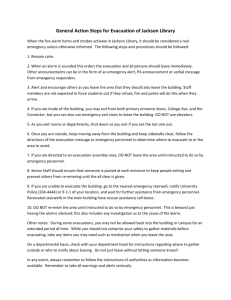
![Action Plan Training for College of Education [Erickson Hall]](http://s3.studylib.net/store/data/006838784_1-e08201da1f024d72d03dde66b95777a5-300x300.png)
